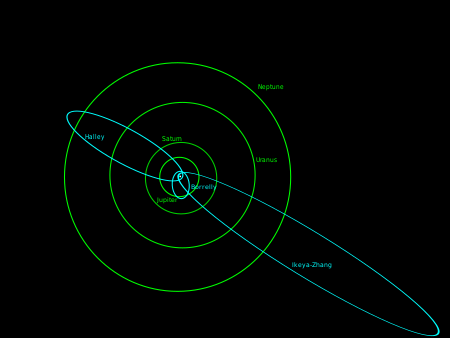153P/Ikeya–Zhang
[3] On 1 February 2002, Chinese astronomer Zhang Daqing from Kaifeng discovered a new comet in the constellation Cetus, and reported it to the IAU.
The comet was observed in 1661, 341 years earlier, by Polish astronomer Johannes Hevelius.
[a] The comet passed perihelion on 18 March 2002, and with apparent magnitude 2.9.
With a multi-hundred year orbit involving asymmetric outgassing the next perihelion passage is expected between 2362–2363.
This data suggested the comet tail had a length greater than 7.5 AU (1.12 billion km), making it the longest yet detected.
